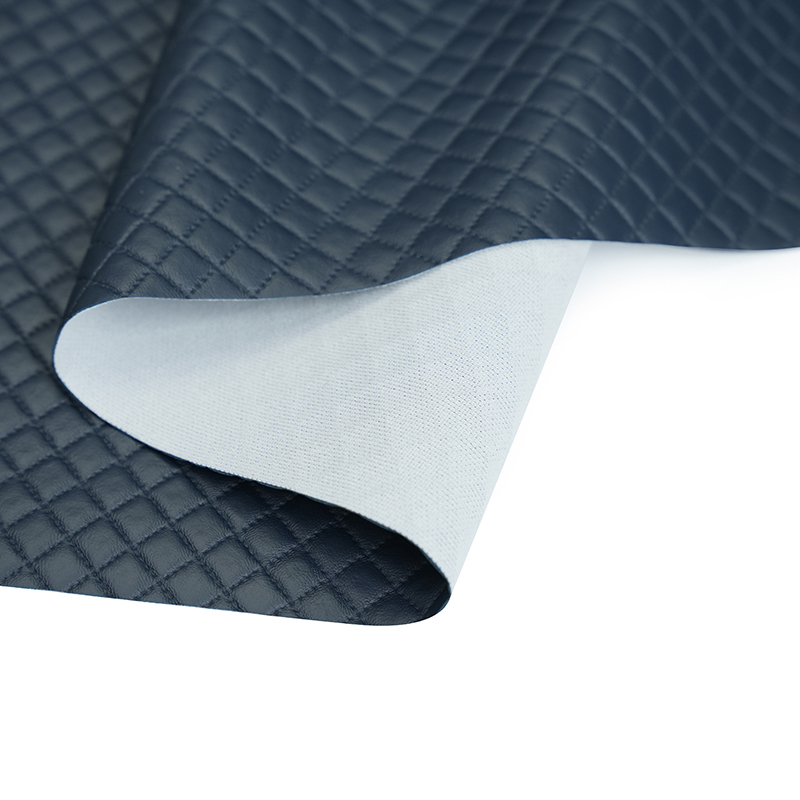In the world of soft furnishings and design, leather fabric plays a crucial role with its unique texture and durability. When we talk about leather, we first need to distinguish between artificial leather and genuine leather. Genuine leather, derived from animal hides, typically has a more natural grain, pores, and breathability. Its touch is warm, and it develops a unique patina over time. Artificial leather, also known as synthetic or PU/PVC leather, is a man-made imitation created through chemical synthesis. While it may not match genuine leather in terms of feel and breathability, artificial leather excels in durability, water resistance, and color variety. Its more affordable price makes it a preferred choice in many applications where cost and functionality are key. Beyond these two basic types, there are many other commonly used leathers, such as suede and nubuck with their velvety feel, as well as specially treated oil-wax leather and pebbled-grain leather. Each offers a unique visual and tactile experience, suitable for different upholstery styles.
For families looking to make a significant change with a small budget, restoring an old sofa is an excellent and cost-effective option. When considering giving an old sofa a new look, choosing the right leather fabric is crucial for success. We need to carefully assess whether the sofa's frame is still sturdy and if the internal padding needs to be replaced. When selecting leather, in addition to considering its coordination with the overall home style, you should also focus on the fabric's durability and ease of cleaning. For example, if there are children or pets in the home, a wear-resistant and stain-proof artificial leather would be more practical. If you seek the ultimate comfort and a luxurious feel, a soft and delicate top-grain genuine leather is the perfect choice. By carefully selecting the leather, you can not only revitalize an old sofa but also inject new life into the entire living space.
Upgrading a car's interior with leather is not just a way to enhance the vehicle's class; it's a vital part of improving the driving experience. Unlike home upholstery, car interior leather must withstand more demanding environmental challenges, such as prolonged sun exposure, temperature changes, and frequent friction. Therefore, car-specific leather fabrics are usually specially treated to have higher light resistance, heat resistance, and abrasion resistance. Many car owners choose to DIY their car interior upgrades, often starting with steering wheel covers, seat covers, or door panel trim. When performing such modifications, it is essential to ensure that the chosen leather fabric is odorless, free of harmful substances, and possesses good flexibility for easy cutting and sewing. This is the prerequisite for ensuring both safety and aesthetics.
Leather is not only a material for large-scale upholstery but also a treasure trove for DIY enthusiasts. From wallets and cardholders to handbags, from small accessories to home decor, leather offers endless creative possibilities. When choosing leather for crafting, lightweight and easy-to-cut vegetable-tanned leather and chrome-tanned leather are common choices. Vegetable-tanned leather, with its rigid nature and absorbency, is perfect for processes like carving and stamping. Chrome-tanned leather, on the other hand, is known for its softness and wide range of colors, making it more suitable for creating pliable leather goods. With simple tools and some basic sewing skills, you can turn a piece of ordinary leather fabric into a unique, personalized creation, enjoying the fun and sense of accomplishment that comes with crafting.
Whether it's a high-end genuine leather sofa or a daily-use leather accessory, proper maintenance and care are key to extending its lifespan and preserving its beauty. For daily cleaning, simply use a soft, dry cloth or a slightly damp cloth to wipe it down, avoiding cleaners with corrosive chemicals. For stubborn stains, you should use a specialized leather cleaner. In addition to daily cleaning, regular deep conditioning is also crucial. Every so often, use a professional leather conditioner or cream to replenish moisture and oils, preventing the leather from drying out and cracking. This periodic nourishment not only keeps the leather soft to the touch but also restores its luster, ensuring that every one of your leather items radiates a lasting charm.
